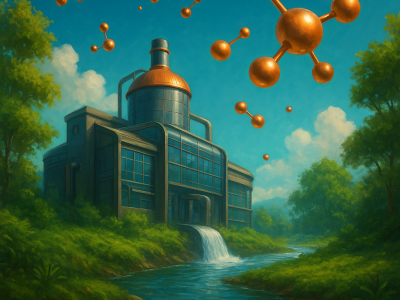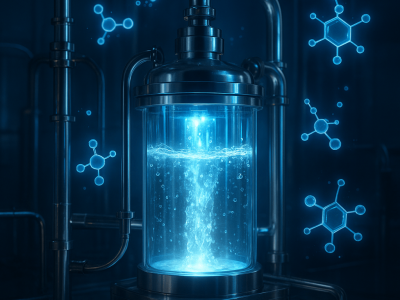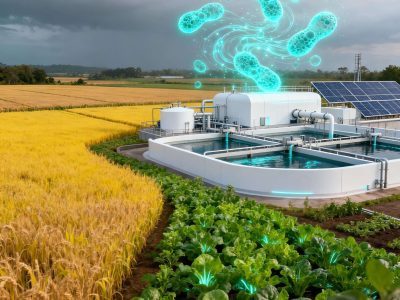Toxic dyes in rivers, carbon dioxide in the air, and hazardous compounds in drinking water all demand urgent solutions. While most of us never think about them, catalysts play a vital role in addressing these pressing challenges. These silent materials accelerate chemical reactions without being consumed themselves, making industries more efficient while cutting down on pollution. From agricultural waste to nanomaterials, recent research shows how catalysts are reshaping the way we clean water, reduce emissions, and build a sustainable future.
In simple terms, a catalyst speeds up a reaction without being consumed. When the catalyst is a solid, while the reacting chemicals are in liquid or gas form, we call it heterogeneous catalysis. This simple idea has a huge impact. It makes chemical plants more efficient, reduces energy demand, and enables pollution control.
From farm waste to clean rivers
During his doctoral research at the National Institute of Technology (NIT) Raipur, Dr Damodhar Ghime explored how agricultural residues could be transformed into catalysts for environmental protection. Rice husk, a common agricultural by-product rich in silica, became the focus. By developing silica-supported iron catalysts, Dr Ghime and Professor Prabir Ghosh demonstrated an innovative Fenton-like process that used hydrogen peroxide to degrade oxalic acid in industrial wastewater. Their findings, published in the Journal of Water Process Engineering, revealed that nearly 70 percent degradation was achieved within one hour under optimised conditions.
This approach was not only effective but also sustainable. It highlighted how agricultural residues, often considered a disposal problem, could be reimagined as functional materials for water treatment. By turning waste into a solution for waste, the research offered a model of circular economy thinking within environmental engineering.
Red dust to the rescue
The textile industry releases large volumes of synthetic dyes that threaten both aquatic ecosystems and human health. One promising solution emerged from the use of hematite, a naturally abundant form of iron oxide. In a study published in Environmental Engineering Science, Dr Ghime, working again with Professor Ghosh, investigated hematite as a catalyst in degrading Orange G dye through a Fenton-like reaction. The team reported more than 95 percent removal of the dye under optimised conditions.
Hematite is inexpensive and widely available in India, making it a practical material for wastewater treatment. The study also showed that hematite catalysts could be reused effectively, reinforcing the sustainability of this approach. By relying on an abundant natural mineral, industries could reduce dependence on expensive imported materials while addressing local pollution problems.
A reactor that never rests
Beyond the choice of catalyst, reactor design plays a crucial role in practical wastewater treatment. Traditional batch reactors mix chemicals in a single stage but face limitations in scalability. Dr Ghime, along with co-authors from NIT Raipur, advanced the concept of continuous treatment through fixed-bed reactors. In a paper published in the Journal of Hazardous, Toxic, and Radioactive Waste, the researchers described how iron-loaded activated carbon functioned in a fixed-bed setup to remove methylene blue dye from water.
The design combined the adsorption properties of activated carbon with the catalytic efficiency of iron, providing a continuous treatment system more suited for industrial application. This research highlighted how laboratory innovation could be translated into industrial-scale processes, bridging the gap between bench-scale chemistry and practical engineering solutions.
When sunlight cleans water
Photocatalysis, driven by light energy, offers another path to sustainable water purification. Titanium dioxide is a well-established photocatalyst, but its activity is limited to ultraviolet light. To overcome this, Dr Ghime and colleagues at NIT Raipur investigated carbon-doped titanium dioxide. Their study, published in IOP Conference Series: Earth and Environmental Science, demonstrated that the modified material could degrade eosin yellow dye under visible light, achieving over 80 percent removal under optimised conditions.
By extending photocatalytic activity into the visible spectrum, the research aligned treatment processes with natural sunlight. In regions with abundant solar radiation such as India, visible-light photocatalysis offers a promising route to decentralised and energy-efficient water purification. It also opens the possibility of low-cost solar-driven treatment units for communities facing water quality challenges.
Catalysts beyond water treatment
While water purification is a critical application, heterogeneous catalysts also drive innovation in other sectors. Emerging research into electrochemical catalysts has demonstrated applications in sensors for healthcare and food safety. Materials such as graphene oxide and MXenes provide conductivity and abundant active sites, enabling sensitive detection of gases, glucose, and biomarkers. Here, catalysts serve not to clean water but to improve diagnostics, showing their versatility in addressing societal needs.
Catalysts also hold promise in tackling climate change. Instead of viewing carbon dioxide solely as waste, catalytic processes can transform it into valuable products such as methanol and ethanol. Metal-based catalysts and zeolites are central to this conversion, offering pathways to reduce greenhouse gas emissions while creating fuels and chemicals that support industry.
The industrial workhorses
Catalysts are not limited to low-temperature applications. High-temperature reactions drive essential industrial processes, from steam reforming to emissions control in combustion systems. Chromium-promoted iron oxides and noble metal catalysts function as silent workhorses in these settings. They cut vehicle emissions, refine fuels, and sustain chemical manufacturing. While often unnoticed, their reliability is foundational to modern industry.
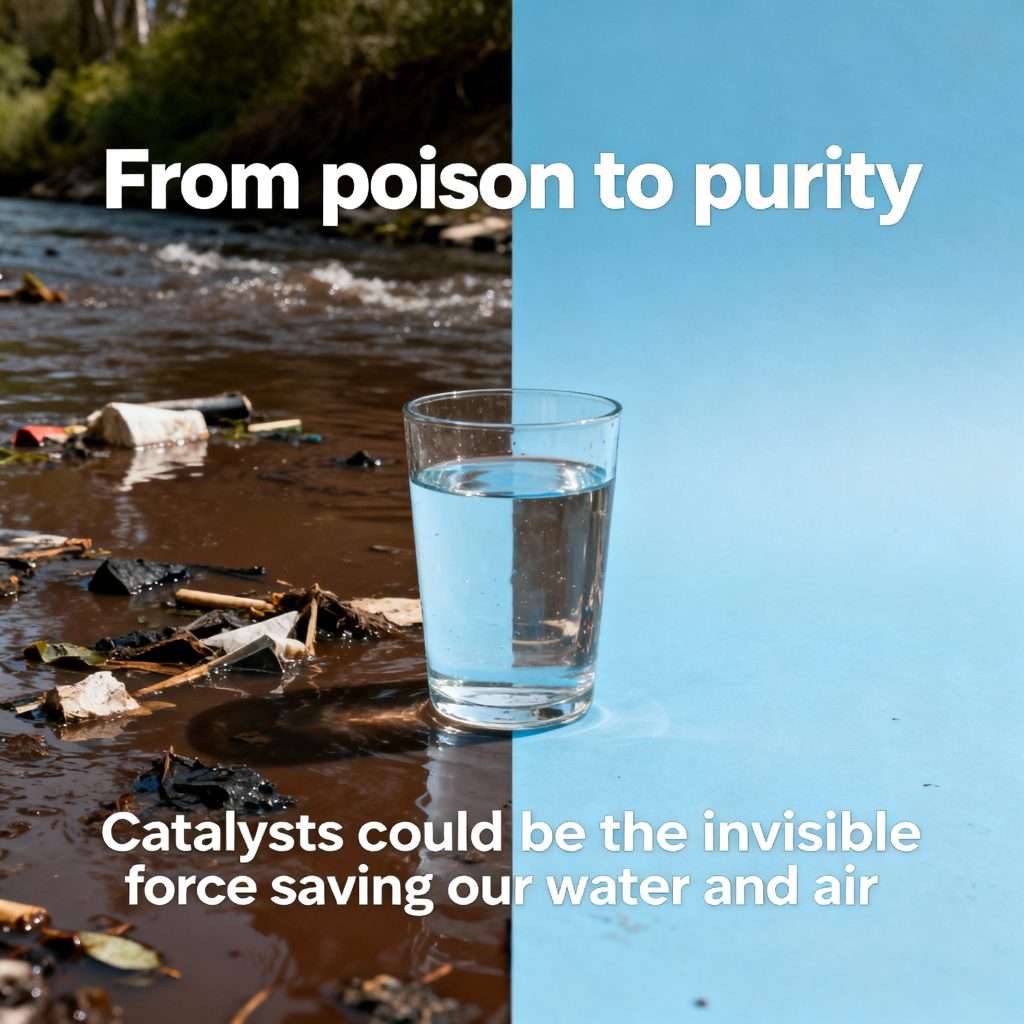
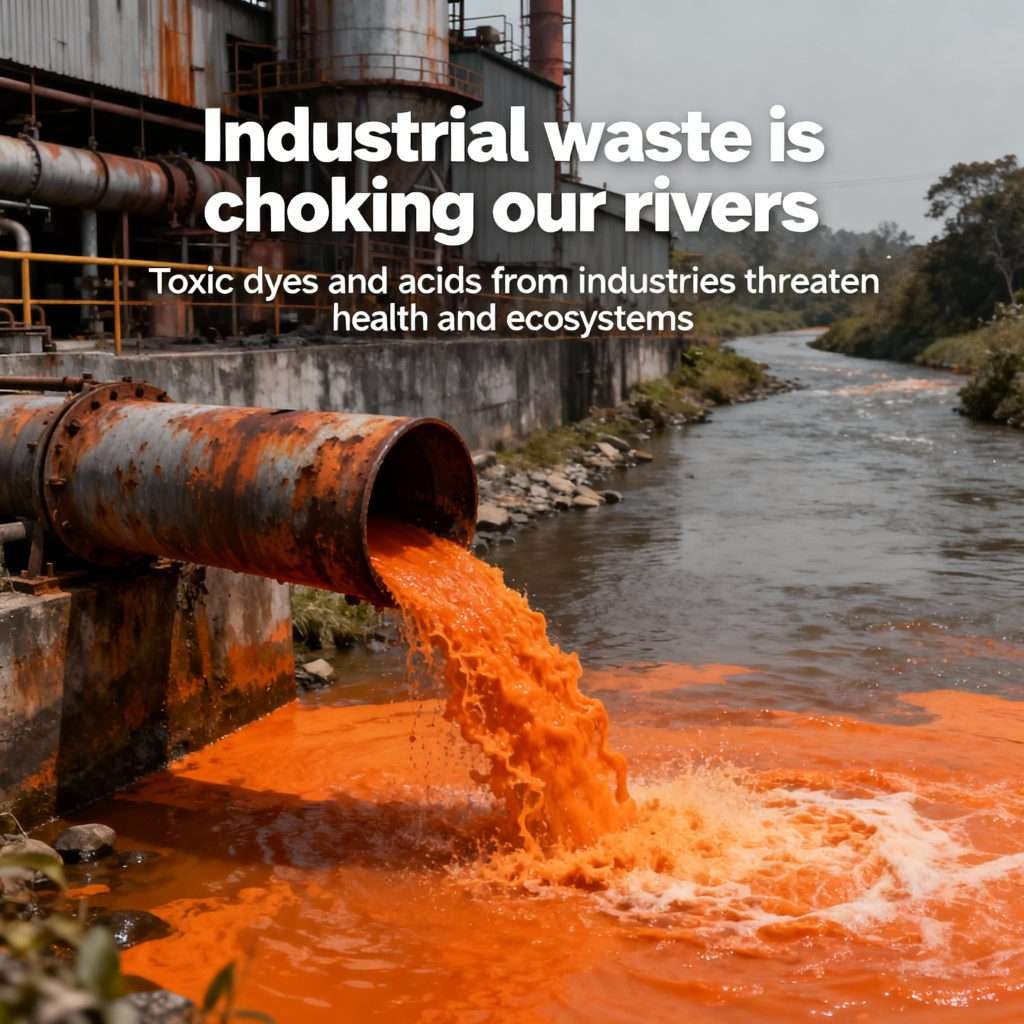
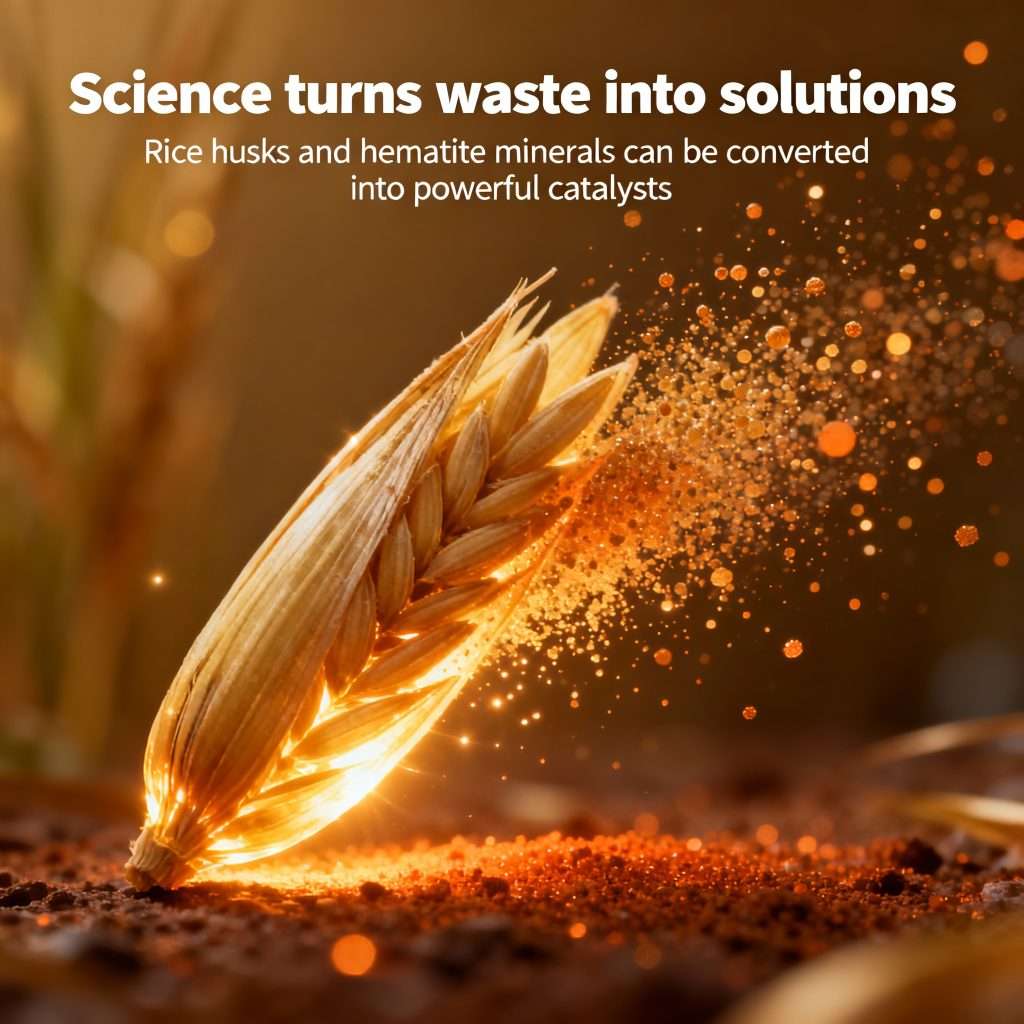

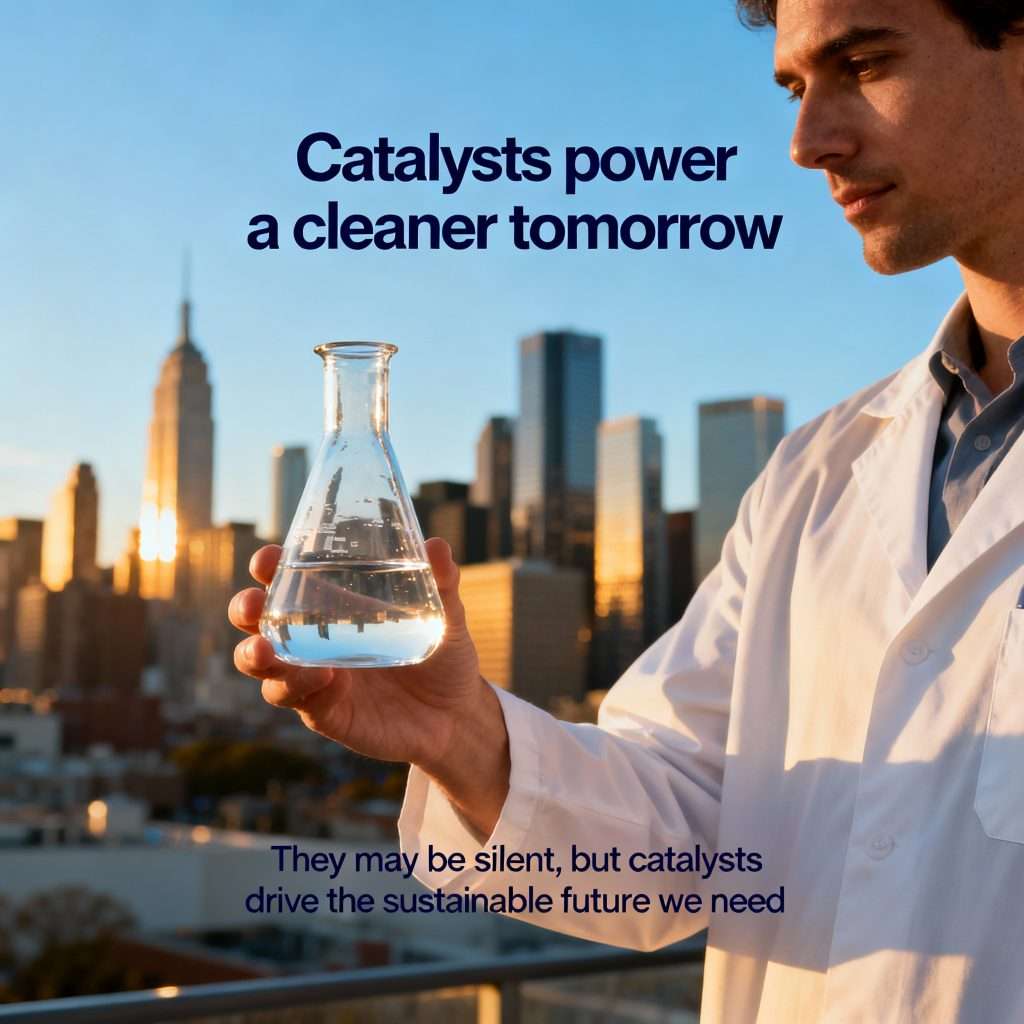
The wider impact
The societal benefits of catalysis extend beyond the laboratory. Catalysts enable access to clean water by removing dyes, acids, and other toxic compounds before they contaminate rivers or groundwater. They protect air quality by reducing nitrogen oxides in car exhaust systems. They contribute to lowering the carbon footprint by converting greenhouse gases into usable fuels. They improve healthcare diagnostics through the development of nanoscale sensor technologies. They also promote resource efficiency by turning agricultural residues like rice husk into valuable environmental materials.
Taken together, these impacts demonstrate how catalysts, though invisible in everyday life, act as a force for sustainability. They enable industries to operate with reduced environmental harm and point towards new strategies for resource use and waste management.
Looking ahead
The field of catalysis continues to evolve. Researchers are now working towards catalysts that are more sustainable, reusable, energy-efficient, and versatile. Materials sourced from natural waste, such as rice husk, provide renewable feedstocks for catalyst synthesis. Strategies to extend catalyst lifetimes reduce costs and minimise leaching. Advances in photocatalysis align energy needs with sunlight, cutting reliance on electricity. Applications are also widening, with catalysts now contributing to climate mitigation, air purification, water treatment, and healthcare.
For Dr Ghime, years of research have underscored a central lesson: catalysts may be silent in operation, but their impact resonates across society. From raw rice husk to carbon-doped titanium dioxide, each catalyst has a story of transformation. Each discovery reinforces the idea that science can turn overlooked materials into powerful tools for a cleaner and safer world.
References
Ghime, D., Mahajan, J., & Ghosh, P. (2016). Decoloration of orange G by mineral hematite catalyzed the Fenton-Like process. Environmental Engineering Science, 33(12), e1004–e1014. https://doi.org/10.1089/ees.2015.0534
Ghime, D., & Ghosh, P. (2017). Heterogeneous Fenton degradation of oxalic acid by using silica supported iron catalysts prepared from raw rice husk. Journal of Water Process Engineering, 19, 156–163. https://doi.org/10.1016/j.jwpe.2017.07.025
Ghime, D., Mohapatra, T., Verma, A., Banjare, V., & Ghosh, P. (2020). Photodegradation of aqueous eosin yellow dye by carbon-doped TiO2 photocatalyst. IOP Conference Series: Earth and Environmental Science, 597(1), 012010. https://doi.org/10.1088/1755-1315/597/1/012010
Punathil, S., Ghime, D., Mohapatra, T., Thakur, C., & Ghosh, P. (2020). Fixed bed reactor for removal of methylene blue dye using heterogeneous fenton catalyst. Journal of Hazardous, Toxic, and Radioactive Waste, 24(4). https://doi.org/10.1061/(asce)hz.2153-5515.0000534





